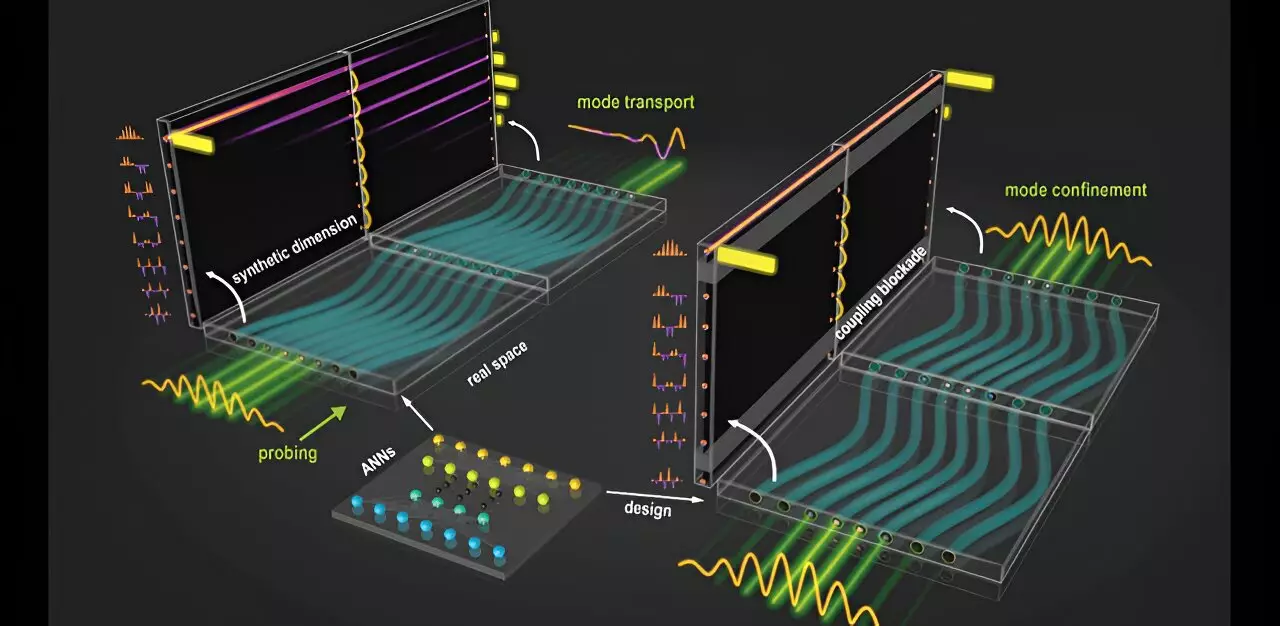In the realm of physics, synthetic dimensions (SDs) have emerged as one of the frontiers of active research, offering a pathway to explore phenomena in higher-dimensional spaces, beyond our conventional 3D geometrical space. This concept has gained significant attention, particularly in topological photonics, due to its potential to unlock rich physics that are inaccessible in traditional dimensions. Researchers have put forth various theoretical frameworks to study and implement SDs, with the goal of harnessing phenomena like synthetic gauge fields, quantum Hall physics, discrete solitons, and topological phase transitions in four dimensions or higher. These proposals hold the promise of leading to new fundamental understandings in physics.
One of the primary challenges faced in conventional 3D space is the experimental realization of complex lattice structures with specific couplings. Synthetic dimensions offer a solution to this challenge by providing a more accessible platform for creating intricate networks of resonators with anisotropic, long-range, or dissipative couplings. The capability of SDs has already resulted in groundbreaking demonstrations of non-Hermitian topological winding, parity-time symmetry, and other phenomena. By manipulating various parameters or degrees of freedom within a system, such as frequency modes, spatial modes, and orbital angular momenta, SDs show promise for applications in diverse fields ranging from optical communications to topological insulator lasers.
As reported in Advanced Photonics, an international team of researchers has made significant progress in creating customizable arrays of waveguides to establish synthetic modal dimensions. This advancement allows for effective control of light in a photonic system without the need for complicated extra features like nonlinearity or non-Hermiticity. The ability to adjust different modes of light within the system brings us closer to achieving ‘utopian’ networks, where all parameters of an experiment are perfectly controllable.
In their research, the team of researchers utilized artificial neural networks (ANNs) to design waveguide arrays in real space. These ANNs were trained to create waveguide setups with the desired mode patterns, allowing for precise control of light propagation and confinement within the arrays. By employing ANNs, the researchers were able to design a special type of photonic lattice structure called a Su-Schrieffer-Heeger (SSH) lattice, which enables topological control of light throughout the system. This innovative approach showcases the unique properties of synthetic dimensions and opens up new possibilities for discoveries in physics.
The implications of this work are substantial, as fine-tuning waveguide distances and frequencies can lead to optimized designs and fabrication of integrated photonic devices. This research not only holds promise for advancements in photonics but also offers insights into geometrically inaccessible physics. The interplay of topological photonics and synthetic dimension photonics empowered by ANNs presents new possibilities for discoveries that may lead to unprecedented materials and device applications. With ongoing research and advancements in the field of synthetic dimensions, the potential for groundbreaking discoveries and transformative applications remains vast.


Leave a Reply